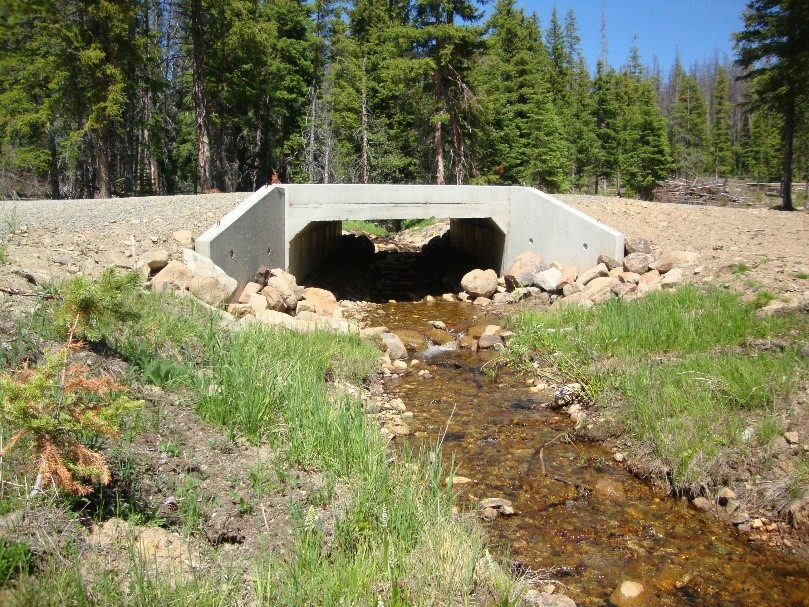In this article, you will learn about the potential effects of rising sea levels on coastal communities. As global temperatures continue to rise, the melting ice caps and glaciers contribute to the gradual increase in sea levels. This phenomenon poses significant challenges and consequences for the communities living near the coastlines. We will explore the various impacts such as increased erosion, flooding, and displacement of people, as well as the potential measures that can be taken to mitigate these effects. So, grab your life jacket, and let’s dive into the world of rising sea levels and its implications for coastal communities.

Impact of Rising Sea Levels on Coastal Communities
Living near the coast has always been desirable for many people, with its beautiful beaches, breathtaking views, and abundant marine resources. However, climate change continues to pose significant threats to these coastal communities. One of the most alarming consequences of climate change is the rising sea levels. As the global temperature increases, the polar ice caps and glaciers melt, causing the sea levels to rise at an unprecedented rate. This rise in sea levels has led to a multitude of challenges for coastal communities, encompassing various aspects such as erosion of coastal land, increased flooding risk, saltwater intrusion into freshwater sources, threats to infrastructure and property, environmental and ecological impacts, health and safety concerns, economic consequences, social and cultural impacts, and the need for adaptation and mitigation strategies, government policies, international cooperation, community engagement, and awareness. Let’s take a closer look at how each of these aspects is affected by the rising sea levels.
Erosion of Coastal Land
One of the most apparent and immediate impacts of rising sea levels on coastal communities is the erosion of coastal land. As the sea levels rise, waves and storm surges become more powerful, causing the shoreline to retreat. This erosion can result in the loss of valuable land, infrastructure, and even homes. Coastal erosion not only affects the aesthetic appeal of the coastline but also leaves the communities vulnerable to future extreme weather events.
Increased Flooding Risk
Rising sea levels also significantly increase the risk of flooding in coastal communities. As the sea levels rise, even a minor storm or high tide can cause severe flooding. Low-lying areas and coastal cities are particularly susceptible to this risk. Flooding not only damages properties but can also disrupt essential services and put lives at risk. With sea levels predicted to continue rising, the frequency and severity of flooding events are expected to worsen, necessitating proactive measures to mitigate these impacts.
Saltwater Intrusion into Freshwater Sources
Coastal communities often rely on freshwater sources such as rivers, lakes, and groundwater reservoirs for their drinking water and agricultural needs. However, rising sea levels pose a significant threat to these freshwater sources. As the saltwater from the sea infiltrates these freshwater sources, it renders them unusable, impacting both the availability and quality of freshwater. This saltwater intrusion not only affects the access to clean water but also harms coastal agriculture, which heavily relies on freshwater for irrigation. Finding sustainable solutions to mitigate saltwater intrusion is crucial for the survival of these communities.
Threats to Infrastructure and Property
The impact of rising sea levels extends beyond the natural landscape and directly affects the built environment of coastal communities. The infrastructure and property in these areas face numerous threats, including damage to coastal buildings and structures, loss of beaches and coastal land, and disruption of transportation systems.
Damage to Coastal Buildings and Structures
Coastal buildings and structures, such as houses, hotels, businesses, and coastal defense structures, are at risk of significant damage due to rising sea levels. The combination of increased erosion and more frequent flooding exposes these structures to the destructive power of the sea. Over time, the ongoing erosion and flooding can weaken the foundations of buildings, leading to structural instability and potential collapse. Moreover, the corrosive effects of saltwater can expedite the deterioration of coastal infrastructure, requiring costly repairs and renovations.
Loss of Beaches and Coastal Land
Beaches are not only recreational spaces but also vital components of coastal ecosystems. Unfortunately, rising sea levels threaten the very existence of these beloved coastal features. As the sea encroaches on the land, it erodes the beaches, reduces their size, and affects the quality of sand. This loss of beaches not only diminishes the tourism appeal of coastal communities but also disrupts the balance of coastal ecosystems by altering shorelines and habitats.
Disruption of Transportation Systems
Coastal communities heavily rely on transportation systems, including roads, bridges, and ports, for both local mobility and economic activities. However, rising sea levels pose a significant threat to these transportation networks. Increased flooding can render roads impassable, leading to disruptions in daily commutes, emergency services, and the supply chain. Additionally, erosion can undermine the stability of bridges and port infrastructure, compromising their integrity and posing safety risks. Finding ways to adapt and reinforce transportation systems to withstand the impacts of rising sea levels is crucial for maintaining the essential connectivity of coastal communities.
Environmental and Ecological Impact
The ecological repercussions of rising sea levels are extensive and far-reaching. These impacts extend from loss of habitats and biodiversity to disruption of marine ecosystems, ultimately affecting coastal agriculture and fisheries.
Loss of Habitats and Biodiversity
Coastal areas harbor diverse ecosystems, including wetlands, mangroves, estuaries, and coral reefs, which provide habitats for numerous plant and animal species. Unfortunately, rising sea levels threaten the integrity of these habitats. As the sea encroaches further inland, it engulfs and destroys these fragile ecosystems, leading to the loss of essential habitats and a decline in biodiversity. The loss of these habitats not only affects the survival of native flora and fauna but also disrupts the intricate ecological balance, with potential long-term consequences.
Disruption of Marine Ecosystems
Marine ecosystems, such as coral reefs and seagrass beds, play a crucial role in maintaining the health and productivity of our oceans. Rising sea levels pose a significant threat to these delicate ecosystems. Increased water temperatures and ocean acidification associated with climate change further exacerbate the challenges faced by marine ecosystems. The loss of coral reefs not only affects the diversity of marine species but also leaves coastal communities more vulnerable to coastal erosion and storm surge impacts. Protecting and restoring these marine ecosystems is essential for the overall health of our oceans and the coastal communities that rely on them.
Impact on Coastal Agriculture and Fisheries
Coastal communities often engage in agriculture and fishing activities as a means of livelihood and sustenance. However, rising sea levels pose a significant threat to these coastal industries. Saltwater intrusion into agricultural land renders it unsuitable for cultivation, impacting crop yields and livelihoods. Similarly, the changing sea conditions, including ocean acidification, temperature rise, and altered currents, affect fish populations, making it harder for fishermen to sustain their livelihoods. Finding sustainable and climate-resilient approaches to coastal agriculture and fisheries is crucial for ensuring the economic stability and food security of these communities.
Health and Safety Concerns
Rising sea levels also give rise to various health and safety concerns for coastal communities. These concerns include increased risks of waterborne diseases, health impacts of displacement and migration, and threats to emergency services and infrastructure.
Increased Risks of Waterborne Diseases
As the sea levels rise, flooding becomes more frequent and severe. This leads to an increased risk of waterborne diseases in coastal communities. Contaminated floodwaters can introduce various pathogens, such as bacteria and parasites, into the local water supply. Ingesting or coming into contact with contaminated water can lead to various illnesses, including gastrointestinal infections, skin infections, and respiratory issues. Consequently, communities must take proactive measures to ensure access to clean and safe water, thereby reducing the risk of waterborne diseases.
Health Impacts of Displacement and Migration
Rising sea levels force many coastal communities to face the difficult decision of relocating due to the increased flood risk. The process of displacement and migration can have significant health impacts on individuals and communities. Disrupted social networks, loss of housing, and psychological stress from leaving familiar environments can lead to increased mental health issues. Additionally, inadequate access to healthcare services and sanitation facilities in resettlement areas can further exacerbate health disparities. Supporting the health and well-being of displaced coastal communities is essential during such challenging times.
Threats to Emergency Services and Infrastructure
Rising sea levels pose significant threats to emergency services and infrastructure in coastal communities. In times of flooding or severe storms, emergency services are critical in ensuring the safety and well-being of residents. However, with increased flooding, emergency response systems can become compromised, leading to delayed or inadequate assistance. Moreover, the damage to transportation systems, such as roads and bridges, can impede the movement of emergency vehicles, further hampering response efforts. Strengthening the resilience of emergency services and infrastructure is crucial for protecting the lives and property of coastal communities.

Economic Consequences
The economic consequences of rising sea levels on coastal communities are substantial, affecting various sectors such as tourism, coastal industries, insurance costs, property values, and placing a financial burden on governments and communities.
Loss of Tourism and Coastal Industries
Coastal communities often rely heavily on tourism as a major source of revenue and employment. Unfortunately, rising sea levels and the associated impacts, such as beach erosion and increased flood risks, can deter tourists from visiting these areas. Unattractive beaches, damaged infrastructure, and compromised safety can all contribute to a decline in tourism, resulting in economic losses for coastal businesses and communities. Additionally, many coastal industries, such as fishing, aquaculture, and maritime trade, are directly impacted by the environmental changes caused by rising sea levels. Finding innovative ways to adapt and diversify these economic sectors is essential for the long-term economic resilience of coastal communities.
Higher Insurance Costs and Property Value Decline
Coastal properties are at a higher risk of damage and loss due to rising sea levels. As a result, insurance companies often increase premiums for properties in these vulnerable areas. The higher insurance costs can place a significant financial burden on property owners, making it increasingly challenging for them to afford adequate coverage. Furthermore, the risk of property damage and reduced investment potential due to the uncertainty of future sea level rise can lead to a decline in property values. These economic challenges make it difficult for individuals and communities to recover from the impacts of rising sea levels.
Financial Burden on Government and Communities
Addressing the impacts of rising sea levels and implementing adaptation measures require substantial financial resources. The burden of funding these initiatives falls on both governments and communities. Governments need to allocate funds for coastal defense measures, infrastructure upgrades, and emergency response systems. At the same time, communities may need to invest in resilience-building activities, such as elevating homes and businesses or relocating to safer areas. The financial strain on governments and communities can result in budgetary constraints and divert resources away from other essential services and development projects.
Social and Cultural Impacts
Rising sea levels pose significant social and cultural challenges to coastal communities, including displacement and relocation, loss of cultural heritage and traditions, and the disruption of community bonds.
Displacement and Relocation of Coastal Communities
As rising sea levels threaten the very existence of some coastal communities, the prospect of displacement and relocation becomes a reality for many residents. Leaving behind their homes, livelihoods, and familiar environments can be emotionally and psychologically challenging. Displaced individuals often experience a loss of social networks, cultural identity, and community support systems. Ensuring adequate support and resources for these communities during the relocation process is crucial for minimizing the social and psychological impacts of displacement.
Loss of Cultural Heritage and Traditions
Coastal communities possess a rich cultural heritage and unique traditions that have been shaped by their close relationship with the sea. Unfortunately, rising sea levels can jeopardize the preservation of these cultural aspects. Historical buildings, monuments, and artifacts can be damaged or destroyed by coastal erosion and flooding. Furthermore, the loss of traditional fishing practices, culinary traditions, and storytelling rooted in the coastal environment can erode the cultural fabric of these communities. Documenting and preserving these cultural heritage sites and traditions becomes essential in the face of rising sea levels.
Social Inequality and Disruption of Community Bonds
The impacts of rising sea levels are not felt uniformly by all members of coastal communities. Vulnerable populations, such as low-income individuals, ethnic minorities, and indigenous communities, often bear the brunt of these challenges. The lack of resources, limited access to information, and limited political power can exacerbate social inequality in the face of climate change. In addition, the disruption of community bonds due to displacement and the strain caused by the impacts of rising sea levels can further isolate and marginalize these vulnerable populations. Addressing social inequality and fostering community resilience and cohesion are crucial for ensuring equitable outcomes in the face of rising sea levels.

Adaptation and Mitigation Strategies
To address the challenges posed by rising sea levels, coastal communities need to employ adaptation and mitigation strategies tailored to their unique circumstances. These strategies can include implementing coastal defense measures, promoting sustainable development and land use planning, and investing in climate change resilience and preparedness.
Implementing Coastal Defense Measures
Coastal defense measures, such as seawalls, breakwaters, and beach nourishment, can help protect coastal communities from erosion and storm surge impacts. These structures act as barriers that absorb and dissipate the force of waves, reducing the risk of damage to coastal infrastructure. However, it is essential to strike a balance between protecting the built environment and preserving the natural coastal processes. Employing nature-based solutions, such as restoring wetlands and dunes, can provide additional resilience, benefiting both the environment and the community.
Promoting Sustainable Development and Land Use Planning
Incorporating sustainable development and land use planning practices becomes crucial in the face of rising sea levels. Communities must prioritize resilient infrastructure and building designs that account for future sea level rise and extreme weather events. Implementing zoning regulations that restrict new developments in high-risk areas and encouraging relocation to safer zones can help mitigate the risks posed by rising sea levels. Emphasizing the use of renewable energy sources and promoting green practices can also contribute to reducing the overall carbon footprint of coastal communities.
Investing in Climate Change Resilience and Preparedness
Investing in climate change resilience and preparedness is essential for the long-term sustainability of coastal communities. It involves strengthening emergency response systems, early warning systems, and evacuation plans to ensure the safety of residents during extreme weather events. Enhancing monitoring and data collection systems to better understand the local impacts of rising sea levels is crucial for informed decision-making. Additionally, investing in research and innovation aimed at developing new technologies and strategies to mitigate and adapt to the impacts of rising sea levels is paramount.
Government Policies and International Cooperation
Addressing the challenges posed by rising sea levels requires coordinated efforts at multiple levels, including government policies and international cooperation. Governments play a critical role in implementing coastal zone management and planning policies, supporting vulnerable communities, and engaging in global efforts for climate action.
Coastal Zone Management and Planning
Governments need to develop and implement robust coastal zone management and planning policies to guide the sustainable development and protection of coastal areas. These policies should aim to balance economic development with ecological conservation, ensuring the long-term resilience of coastal communities. Effective zoning regulations, setback lines, and conservation areas are crucial tools in managing coastal development while protecting valuable ecosystems and minimizing risks.
Support for Vulnerable Communities
Vulnerable communities facing the immediate threats of rising sea levels require targeted support from governments. Providing financial resources, technical assistance, and capacity-building opportunities can help these communities adapt to the changing coastal environment. Additionally, governments need to facilitate access to relevant information and educational resources to ensure that vulnerable communities are well-informed and empowered to make informed decisions.
Global Efforts for Climate Action
Addressing the impacts of rising sea levels requires international cooperation and concerted efforts from all nations. Governments need to engage in global climate action agreements, such as the Paris Agreement, to collectively combat climate change. Cooperation in sharing knowledge, best practices, and financial resources helps build the capacity of coastal communities to adapt and mitigate the impacts of rising sea levels. Additionally, governments should support and contribute to global initiatives aimed at reducing greenhouse gas emissions and limiting future global temperature rise.
Community Engagement and Awareness
Engaging coastal residents and raising awareness about the impacts of rising sea levels are essential steps in building community resilience. Empowering individuals to actively participate in decision-making processes and fostering a sense of ownership over their communities’ future can lead to more effective and sustainable solutions.
Educating and Mobilizing Coastal Residents
Educating coastal residents about the impacts of rising sea levels and the importance of adaptation and mitigation measures can help mobilize community support. Outreach programs, workshops, and community dialogues can provide valuable information and facilitate discussions on the best way forward. By equipping individuals with knowledge and tools, they can actively contribute to community resilience-building efforts.
Promoting Climate Change Awareness and Education
Promoting climate change awareness and education should go beyond coastal communities and extend to the wider population. Raising awareness about the causes and consequences of rising sea levels can foster a sense of urgency and encourage collective action. Educational initiatives in schools, universities, and community centers can play a crucial role in instilling environmental stewardship and encouraging sustainable practices.
Building Community Resilience and Adaptation Networks
Building community networks focused on resilience and adaptation can help foster social cohesion and collective action. These networks can bring together diverse stakeholders, including residents, local businesses, community-based organizations, and government agencies, to share knowledge, resources, and experiences. Collaborative problem-solving, joint decision-making, and mutual support are essential elements in strengthening community resilience in the face of rising sea levels.
Case Studies and Success Stories
Learning from case studies and success stories can provide valuable insights and lessons for coastal communities facing the impacts of rising sea levels. These examples highlight effective adaptation practices, collaborative efforts, and lessons learned from previous disasters.
Resilient Coastal Communities and Adaptation Practices
Many coastal communities around the world have successfully implemented adaptation practices to address the challenges of rising sea levels. Examples include the Netherlands, which has a long history of managing sea levels through innovative engineering solutions and sustainable land use planning. The city of Miami Beach in the United States has implemented a comprehensive strategy to combat sea level rise, including raising roads and installing pumps to address flooding. These success stories provide inspiration and lessons for other communities facing similar challenges.
Collaborative Efforts and Local Solutions
Collaboration among various stakeholders is often vital for developing effective strategies to address the impacts of rising sea levels. For example, the Sundarbans, a region in Bangladesh and India, has seen successful collaboration between local communities, NGOs, and government agencies to implement nature-based solutions, such as mangrove afforestation and sustainable aquaculture practices. These collaborative efforts highlight the importance of involving diverse perspectives and expertise in finding local solutions to complex challenges.
Lessons Learned from Previous Disasters
Previous disasters, such as Hurricane Katrina in the United States and the Indian Ocean Tsunami, have provided valuable lessons on the importance of preparedness and resilience. These events underscore the need for robust emergency response systems, early warning mechanisms, and inclusive planning processes. Learning from the successes and failures of past disaster responses can help coastal communities better prepare for and respond to the impacts of rising sea levels.
In conclusion, rising sea levels pose significant challenges to coastal communities, impacting various aspects of their lives. From erosion of coastal land and increased flooding risks to threats to infrastructure and property, the impacts are far-reaching and multifaceted. The environmental consequences, such as the loss of habitats and disruption of marine ecosystems, further exacerbate these challenges. Health and safety concerns, economic consequences, social and cultural impacts, and the need for adaptation and mitigation strategies, government policies, international cooperation, community engagement, and awareness all require attention to effectively address the impacts of rising sea levels. By prioritizing resilience, innovation, and sustainable development, coastal communities can adapt and thrive in the face of these challenges, ensuring a sustainable future for generations to come.



